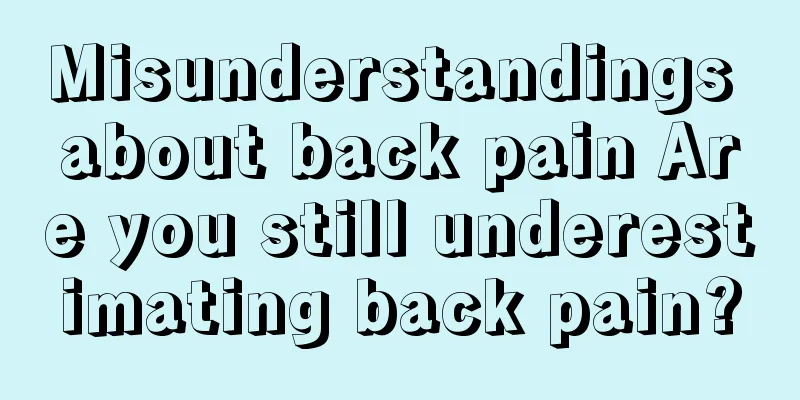What are the symptoms of cholecystitis?

|
Cholecystitis can be divided into acute and chronic. The symptoms of acute cholecystitis are severe pain in the upper abdomen or colic, accompanied by nausea, vomiting, chills and fever. Chronic cholecystitis can cause belching, heartburn, and abdominal distension. 1. Acute cholecystitis (1) Symptoms ① Pain Severe pain or colic in the right upper abdomen is usually caused by acute cholecystitis due to stones or parasites blocking the neck of the gallbladder. The pain often occurs suddenly and is very severe, or presents a colic-like state. It often occurs after eating high-fat foods and often occurs at night. General pain in the right upper abdomen is seen in acute cholecystitis without obstruction of the cystic duct. The pain in the right upper abdomen is usually not severe and is usually continuous and bloating. As the gallbladder inflammation progresses, the pain may also worsen. The pain is radiating, and the most common radiating sites are the right shoulder and the lower angle of the right scapula. This is caused by the inflammation of the gallbladder stimulating the right phrenic nerve endings and the peripheral nerves of the abdominal wall. ② Nausea and vomiting are the most common symptoms. If nausea and vomiting are persistent or frequent, it may cause dehydration, collapse and electrolyte imbalance, which is more common when stones or ascaris block the gallbladder duct. ③ Chills, chills, and fever. Mild cases often have chills and low fever; severe cases may have chills and high fever, the temperature may reach above 39°C, and mental symptoms such as delirium and delirium may occur. ④ Jaundice is less common. If jaundice occurs, it is generally mild, indicating that the infection has spread to the liver through the lymphatic vessels, causing liver damage, or the inflammation has invaded the common bile duct. (2) Main physical signs: Abdominal examination may reveal tension, tenderness, rebound pain in the right upper abdomen and mid-upper abdomen, and a positive Murphy sign. In patients with cholecystectomy or pericholecystic abscess, a tender mass or a significantly enlarged gallbladder may be felt in the right upper abdomen. When abdominal tenderness and abdominal muscle tension extend to other areas of the abdomen or the entire abdomen, it indicates gallbladder perforation. Or there is acute peritonitis. 15% to 20% of patients suffer from liver damage due to edema around the cystic duct, gallstone compression and pericholecystitis, or inflammation involving the common bile duct, causing spasm and edema of the Oddi sphincter, leading to bile excretion obstruction and mild jaundice. If the jaundice becomes significantly worse, it may indicate common bile duct obstruction with stones or concurrent common bile duct inflammation. In severe cases, signs of peripheral circulatory failure may occur. Blood pressure is often low and even infectious shock may occur, which is particularly common in severe cases of purulent gangrene. 2. Chronic cholecystitis (1) Symptoms: persistent dull pain or discomfort in the right upper abdomen; indigestion symptoms such as nausea, belching, acid reflux, abdominal distension and heartburn; pain in the right lower scapular area; symptoms aggravated after eating high-fat or greasy foods; long course of disease, with alternating acute attacks and remissions. Acute attacks are similar to the symptoms of acute cholecystitis, and remissions may sometimes be asymptomatic. (2) Physical signs in the gallbladder area There may be mild tenderness and percussion pain, but no rebound tenderness; in cases of cholestasis, an enlarged gallbladder may be felt; in acute attacks, there may be muscle tension in the right upper abdomen, normal body temperature or low fever, and jaundice may occasionally occur. The tenderness point of the gallbladder is at the intersection of the outer edge of the right rectus abdominis and the costal arch, the tenderness point of the thoracic spine is beside the 8th to 10th thoracic vertebrae, and the tenderness point of the right phrenic nerve is between the two lower corners of the sternocleidomastoid muscle on the right side of the neck. |
<<: Why do you get allergic rhinitis? What are the specific reasons?
>>: How serious are the dangers of head lipoma?
Recommend
What are the treatment and diagnosis methods for kidney cancer?
The natural history of renal cancer provides us w...
The difference between teether and teething stick
Parents with babies know that babies will start t...
What kind of pillow is good
What kind of pillow is the best? In fact, everyon...
What to do if you have sores in your nose
Diseases rarely occur in the nose, but some peopl...
What does breast cancer CA mean
Because CA stands for cancer, many doctors want t...
The reason why spots appear on the face in middle age
There are many women who have fair and clean face...
How much does it cost to treat esophageal cancer
How much does it cost to treat esophageal cancer?...
What should you pay attention to during radiotherapy for lung cancer? Pay attention to these three points during radiotherapy for lung cancer
The complications of radiotherapy for lung cancer...
The efficacy and function of ginger for washing hair
Ginger is a very good food for the human body. Dr...
The efficacy and function of ghost crystal
Ghost crystal is also a type of crystal, but it i...
What are some good Chinese medicine prescriptions for uterine cancer?
Endometrial cancer is a very common malignant tum...
Carrot seed essential oil
With the development of social economy, the econo...
What to do if you accidentally eat a cockroach
We all know that the most common animal in daily ...
8 types of people are most likely to suffer from bad breath
Who is prone to bad breath? There are many reason...
What causes urinary stones
Urinary tract stones are relatively common stones...









